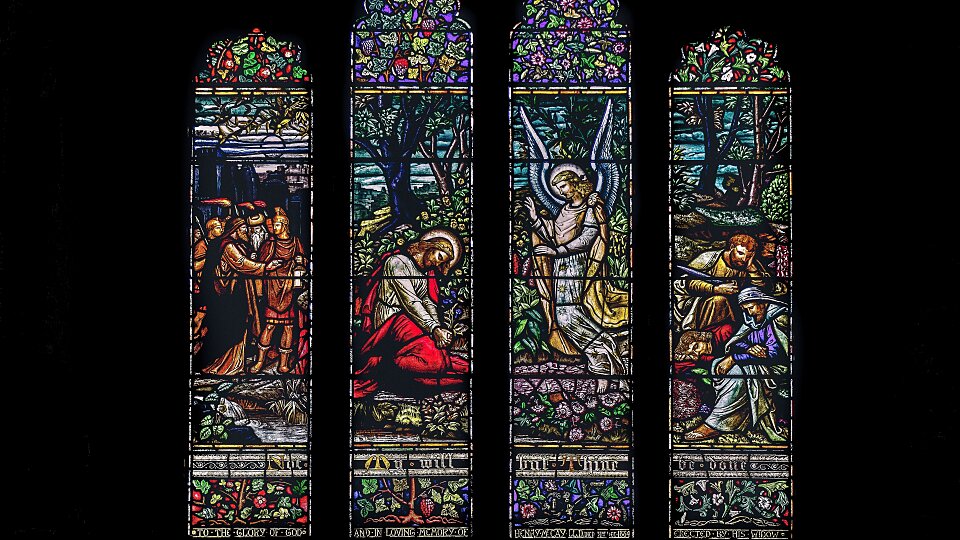Why True Christian Art is Largely Missing Today | Len's Lightbulbs
There is a fundamental shortcoming in what we do in the church in our attempts to create art, and it has to do with our understanding of what “Christian art” is.
One way to know if what you’re looking at is art is if it is open to interpretation. If you are unsure what the meaning or “message” of an image or a song or a sculpture is, then you’re on your way to seeing the work as a piece of art.
ART RAISES QUESTIONS.
It is a form of human expression characterized by beauty. At its core, art doesn’t teach. It may have lessons for us, but the artist does not approach a work of art thinking, I want someone to get this lesson about life.
There is an alternate worldview that does indeed teach. It is called design. The purpose of design, whether graphic design or industrial design or anything else, is to create solutions with style. An industrial designer confronts a problem, such as a chair that isn’t comfortable, and they produce a solution. This is why the Bauhaus school was so influential. They merged an artist’s mindset with the world of industrialization. But make no mistake, a designer is solving a problem
IN THE CHURCH, WE BELIEVE WE HAVE THE ANSWERS TO THE PROBLEM OF THE WORLD.
So our works tend toward a designer’s mindset. We – especially preachers – tend to be less interested in raising questions and expressing a core part of the human experience and more interested in helping people with the solution or answer to their problem.
The irony is, those who don’t know or follow Jesus don’t want to be told. They want to discover – experience – on their own. That’s human nature and it’s also part of education theory. People do better when they discover truth as opposed to accepting the truth of another. It’s also a big part of a culture that has lost the role of mentors and proteges and values individual, peer oriented experience.
This is why I said most “Christian art” is derivative and not really art at all. It’s design. You don’t listen to a Christian song, typically, and stop and wonder at its myriad meanings. You know what they’re trying to say. And that has a role – I don’t mean to minimize it. But we need to understand what that role is. Its role is primarily to the sheep in the fold, as encouragement and help. But it usually doesn’t work with the culture at large, because you almost never wonder about its meaning.
MOST OF WHAT WE CALL CHRISTIAN ART IS DIDACTIC.
The famous cover and music video of “Hurt” by Johnny Cash, on the other hand, is a powerful example of someone who isn’t trying to “preach.” Cash wasn’t trying to communicate a solution. He was simply expressing the pain of loss, of his wife, of his own addictions and shortcomings, of life. The irony, and the lesson if we’re willing to receive it, is that “Hurt”, as an example of communicating the gospel of Jesus, is more powerful today than our attempts at stylized, designed presentations of a solution. If we’d be willing to step back from our need to tell a message, we’d find the Holy Spirit can use our simple human expression to draw people toward Jesus. But this is the key – we need to let go of our need to control the work, control the message, and simply proclaim. Simply communicate our human experience. Tell our story. This is what Matthew 24 means when it says our job is to simply proclaim.
IRONICALLY, WHEN WE ARE ABLE TO LET GO OF THE MESSAGE, WHAT WE CREATE CAN TRULY BE CHRISTIAN ART.
Do you hear what I am saying here? For example, we did a three week series recently at St. Andrew called Witness. (The art for the series above was created by Diana McKnight, a member of our Creative team.) It was originally a filler series between the teaching series. It is our pastoral staff getting up and telling their story of how Jesus changed their life. Not exactly groundbreaking, but maybe it is in the modern church, which prefers stylized type like “Galatians” in a pretty font on the screen while we do expository studies of scripture. Witness has ended up being the most popular series of the year. Even to the sheep in the fold. People prefer to figure out the answers and applications on their own.
WE DO BETTER WHEN WE APPROACH THE WORK OF MINISTRY AS ART NOT AS DESIGN.
In my doctoral work, my cohort and I are currently reading a book called Wonder Beyond Belief. It is a compelling look at works of Christian art from previous cultures – fine art works from previous times and spaces. But here’s the kicker – a Muslim wrote it. As a cohort, we’re mesmerized by it. The reason is because we’re observing someone outside the faith engage with the story of Jesus without being told what to believe or do or say.
We see the power of art to communicate the gospel of Jesus, but the problem is, we in the church are unable to create our own new works of art made in this time and this space, because we can’t get over our need to teach. We’re too afraid of someone developing bad theologies.
Teaching is what you do for a disciple. What the crowd needs is artistic experience.

